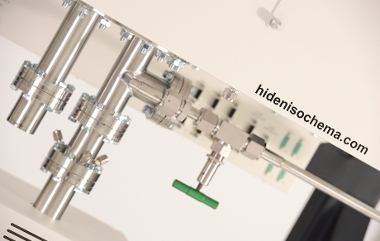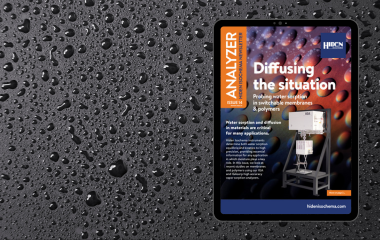What is the Gravimetric Sorption Technique?
What is the Gravimetric Sorption Technique?
The gravimetric sorption technique is one of the most popular methods used to determine the amount and rate of the interaction of a gas or vapor with a material. The material can be a solid or liquid, and both thermodynamics and kinetics of the sorption process are recorded.

Gravimetric Sorption Technique: Working Principle
A typical gravimetric sorption measurement has four stages:
- The sample is loaded into the analyzer
- In-situ degassing and activation are performed, if required
- Gas pressure is applied at programmed values
- Sorption uptake is determined from the measured weight changes
The gravimetric sorption technique works by placing a sample onto a microbalance. The weight of the sample is measured continuously as a function of the applied temperature and pressure. In a typical isotherm measurement the temperature is constant, and the gas pressure is controlled, but measurements can also be made in other more complex modes depending on the gas delivery/control system.
Static mode operates with a pure gas at a range of pressures above vacuum. The sorption uptake is measured to give an isotherm as a function of pressure. Active pressure regulation maintains the gas pressure at a constant value and hence isobaric sorption kinetics are also measured.
Dynamic mode measures sorption uptake as a function of total flow rate, pressure, gas composition and temperature. This mode involves a constant gas flow through the sample chamber, and a suitable gas inlet and outlet is required to control the pressure, composition, and flow.
Both static and dynamic modes can be used for vapors as well as gas species.
Gravimetric Sorption Technique: Sample Preparation
The measurement chamber must either be evacuated or swept with inert gas before the start of a gravimetric sorption measurement, but sample preparation requirements can be different for different types of materials.
Porous materials are generally degassed by being exposed to a vacuum and elevated temperature. This environment results in the desorption of the physisorbed and chemisorbed species.
Some materials such as certain polymer membranes and co-ordination frameworks may not be stable under vacuum, and therefore degassing under inert gas flow may be required.
Hydrides are activated by hydrogenation/dehydrogenation of the metal host, and often decrepitation, where the metal host is broken up into a fine powder.
Catalyst samples may need to be activated by exposure to oxidising or reducing gas species.
The sample may either be prepared externally, and carefully transferred to the sorption analyzer under controlled conditions, or prepared in-situ within the sorption analyzer.
Gravimetric Sorption Technique from Hiden Isochema
Hiden Isochema is a world leader in the development and manufacture of instruments used to perform the gravimetric sorption technique.
Our sorption analyzers are optimized for high accuracy sorption measurements, even for small sample sizes, and samples with low sorption uptake. Hiden Isochema gravimetric sorption analyzers benefit from Intrinsic long-term stability and market-leading pressure and temperature regulation accuracy, which are vital for high accuracy, reproducible sorption measurements.
If you would like any information about our solutions, please contact us.


